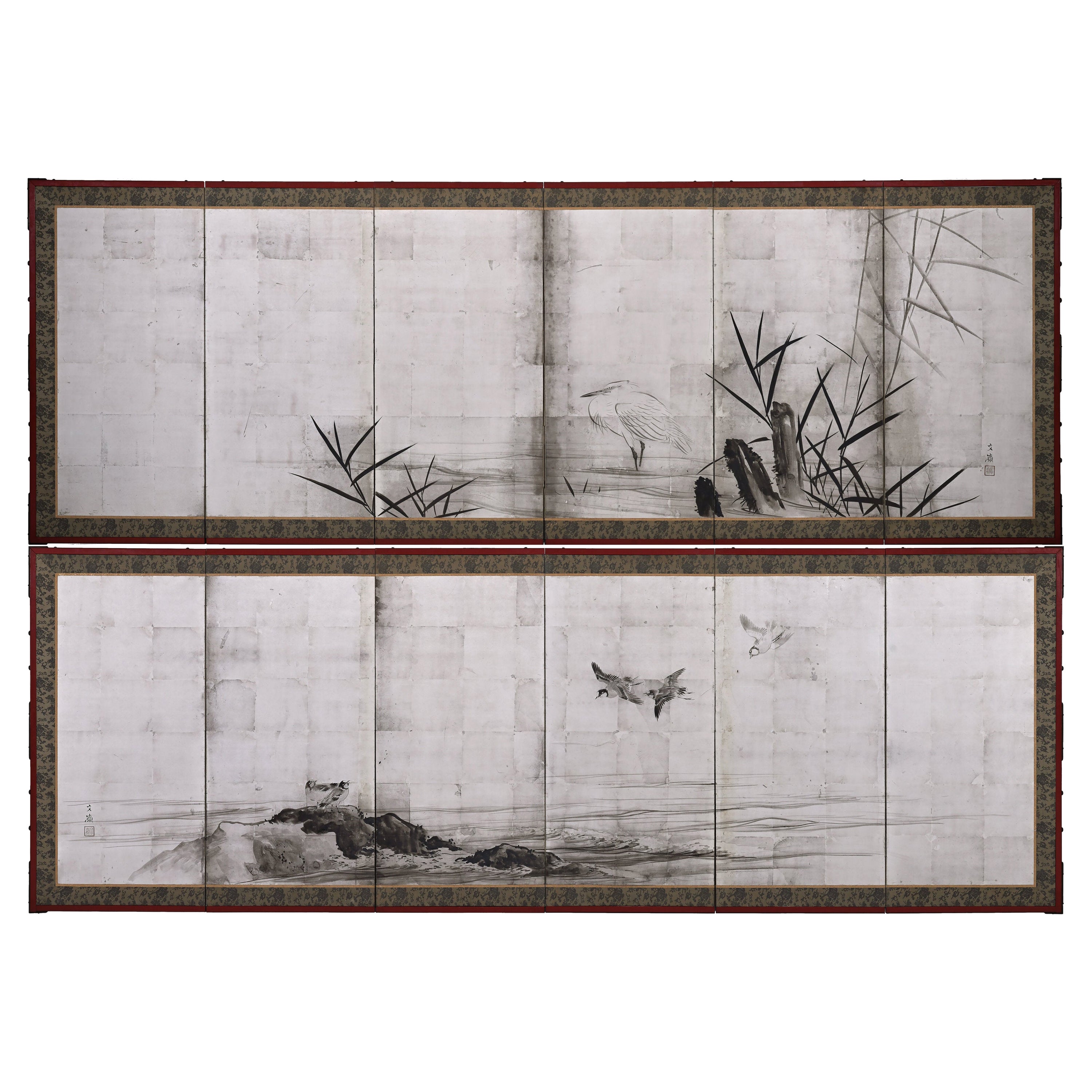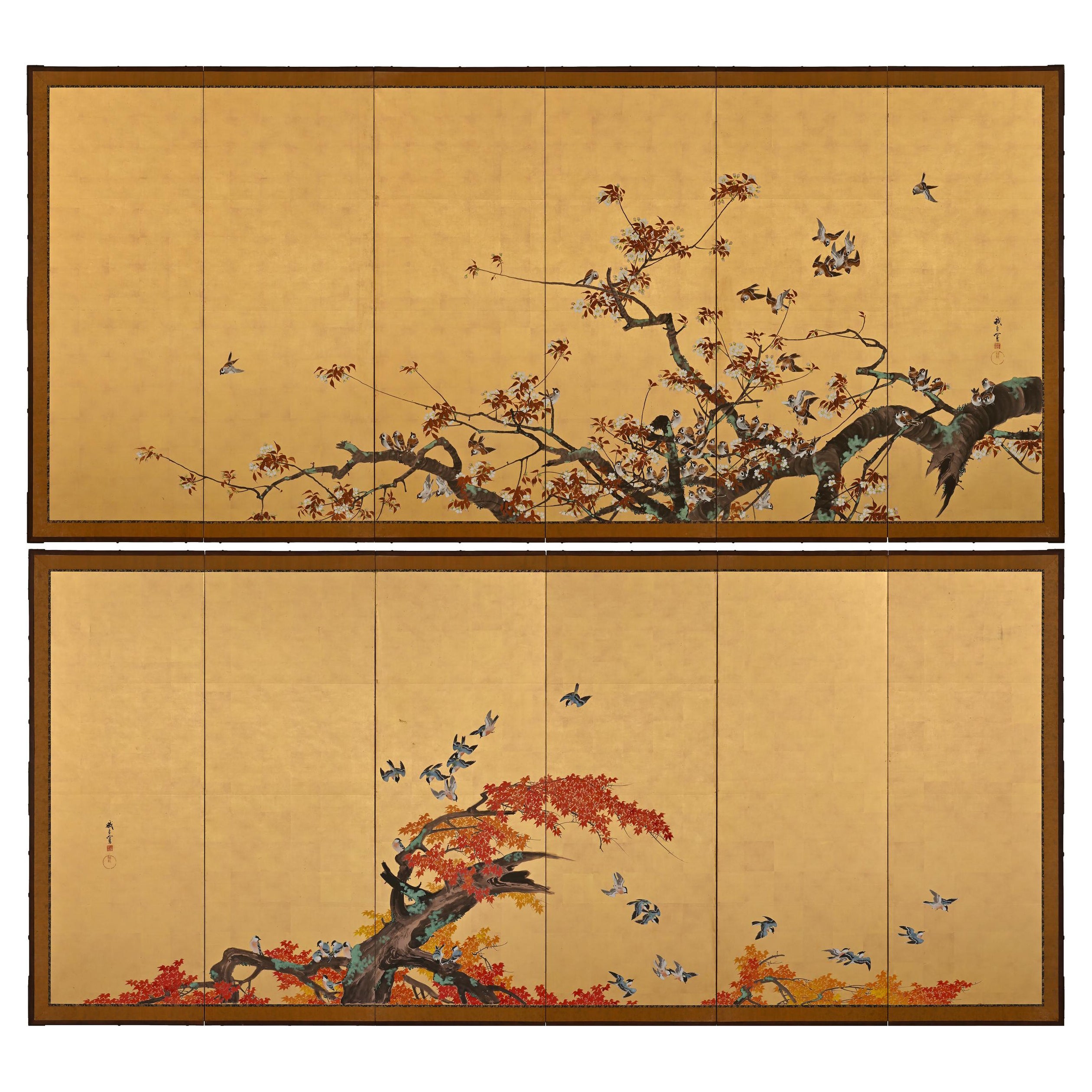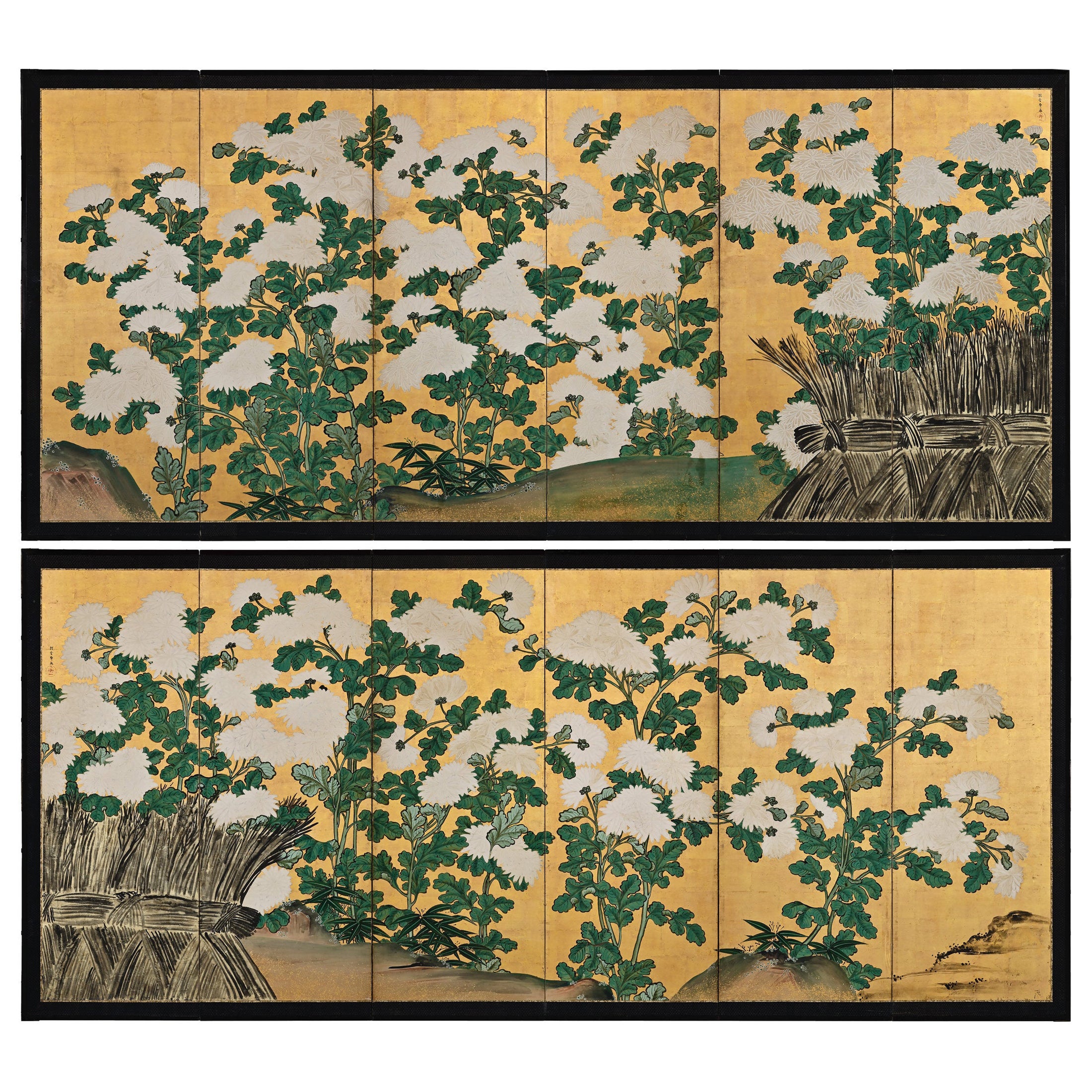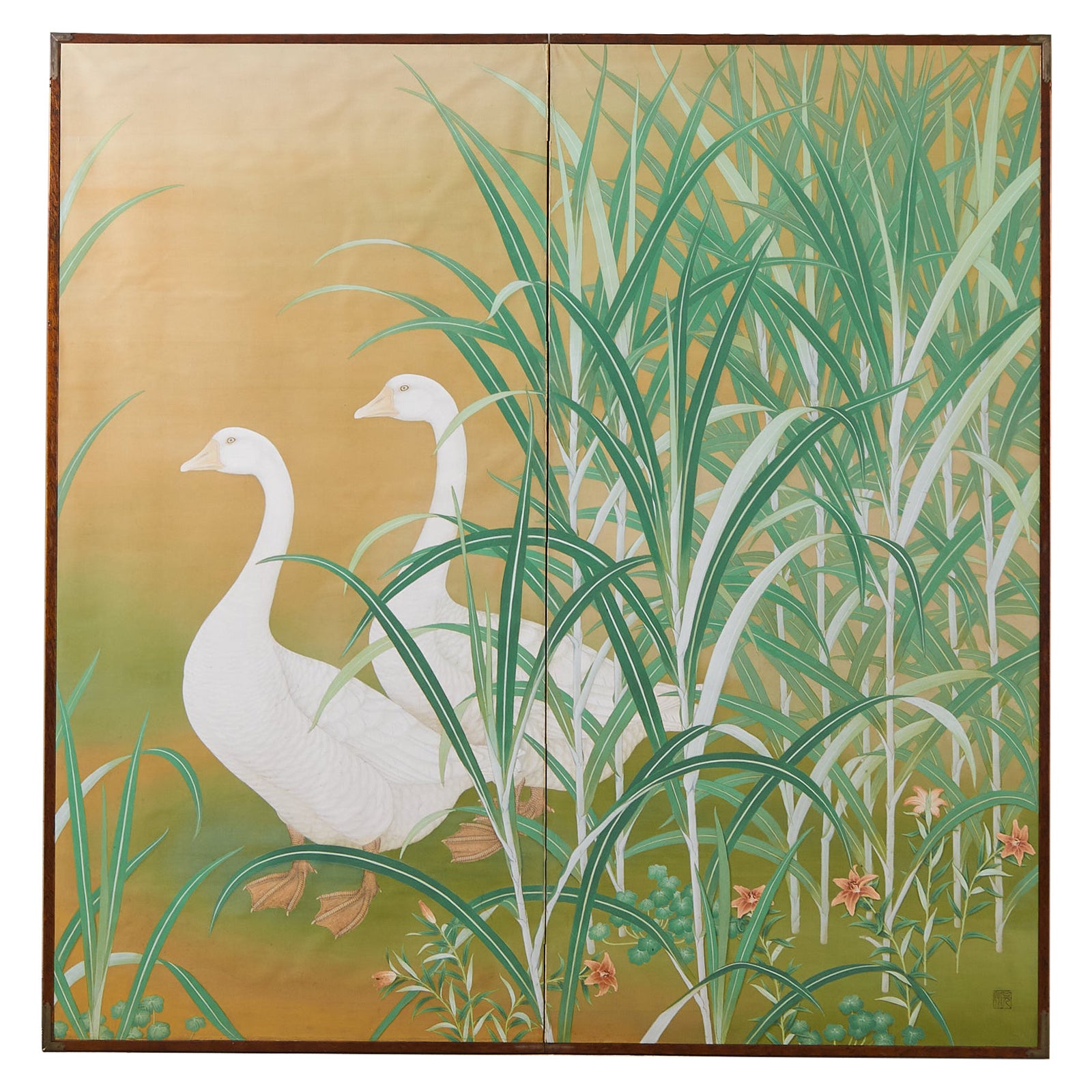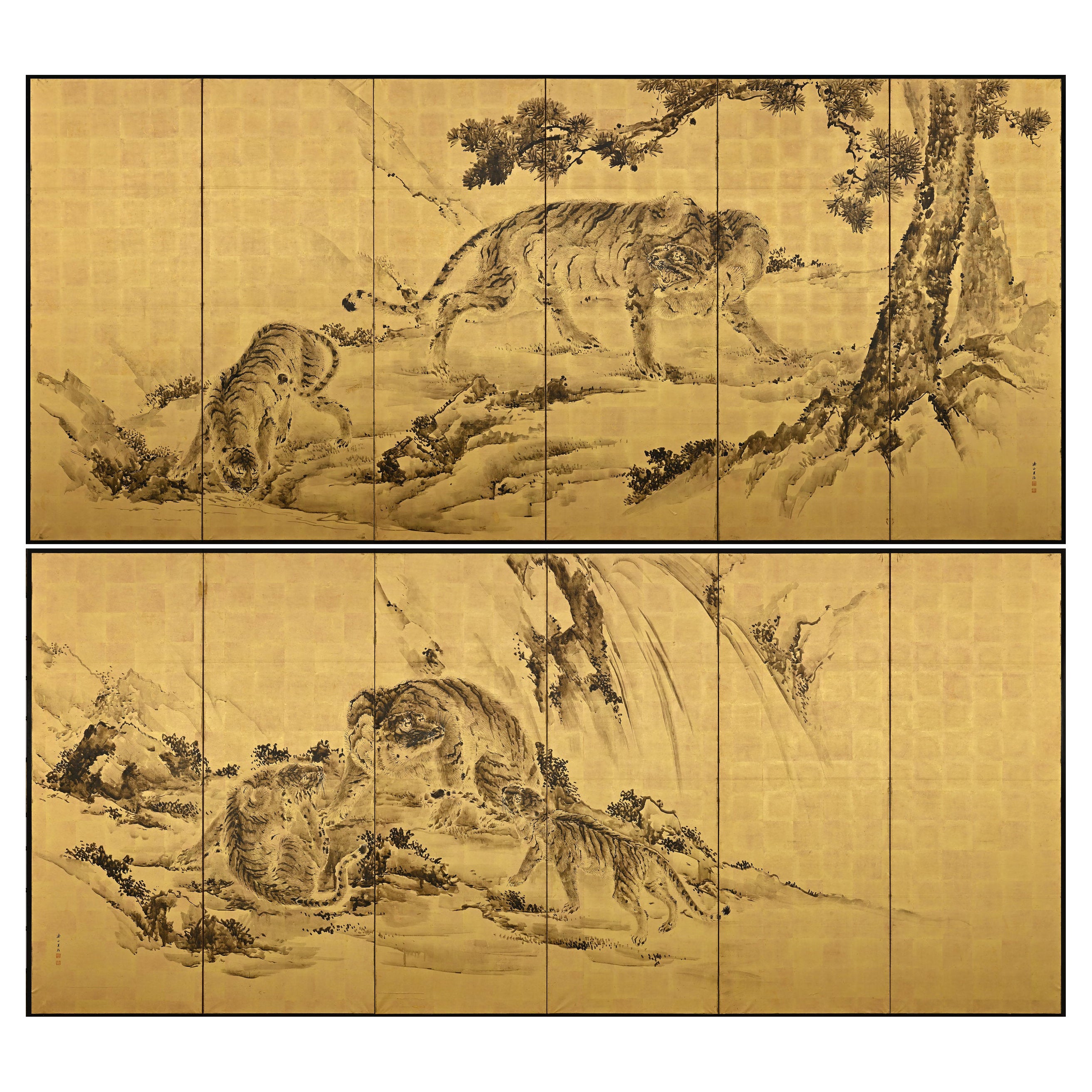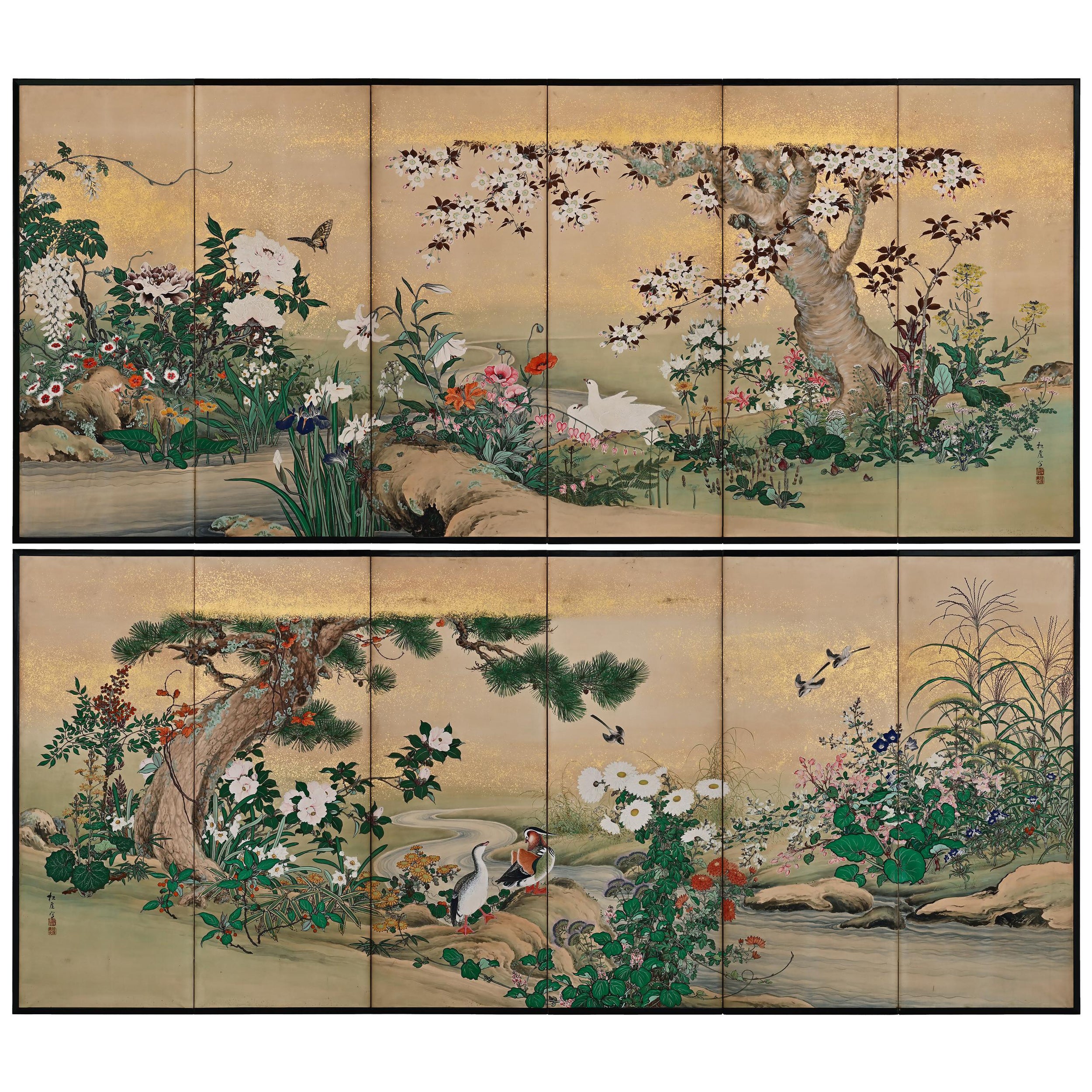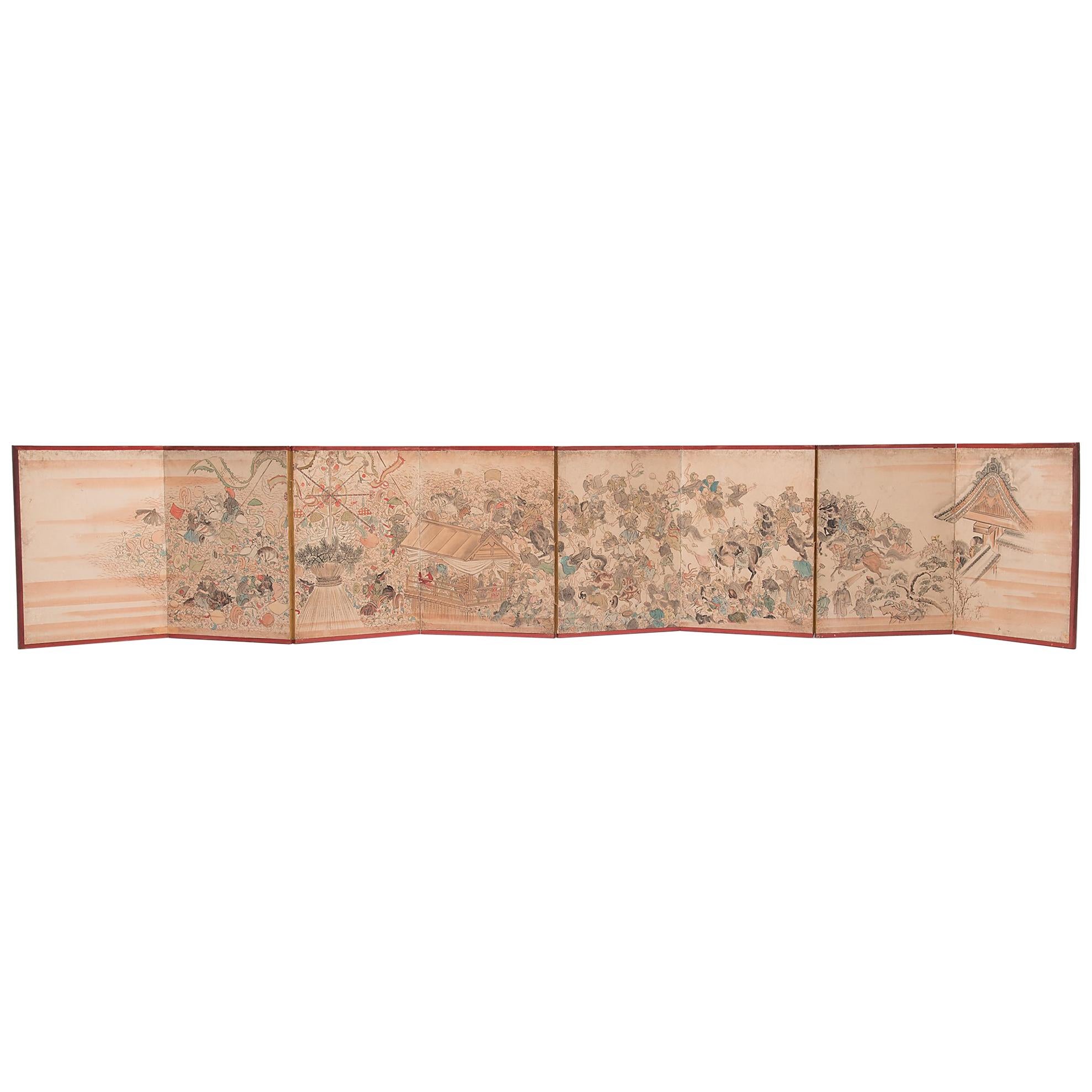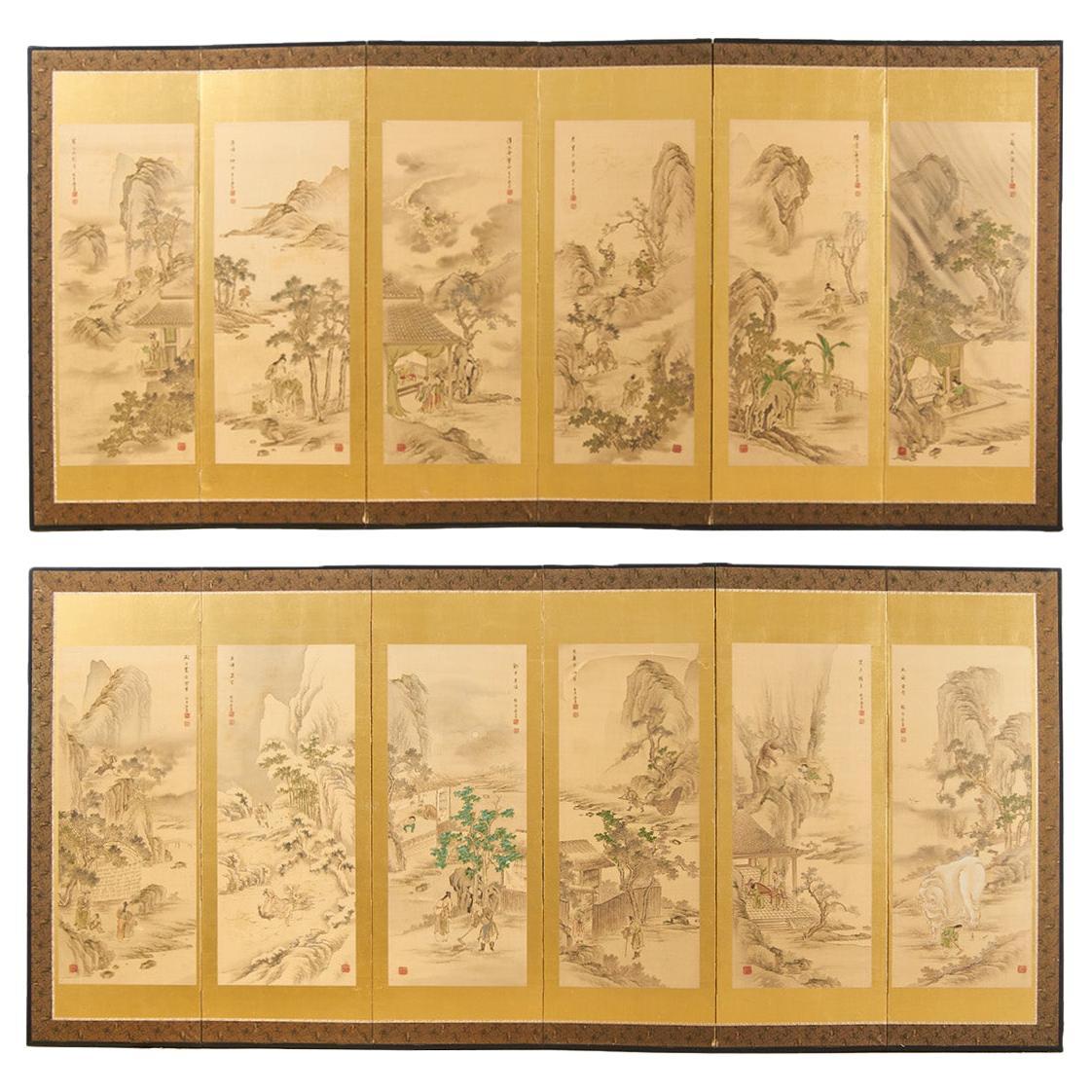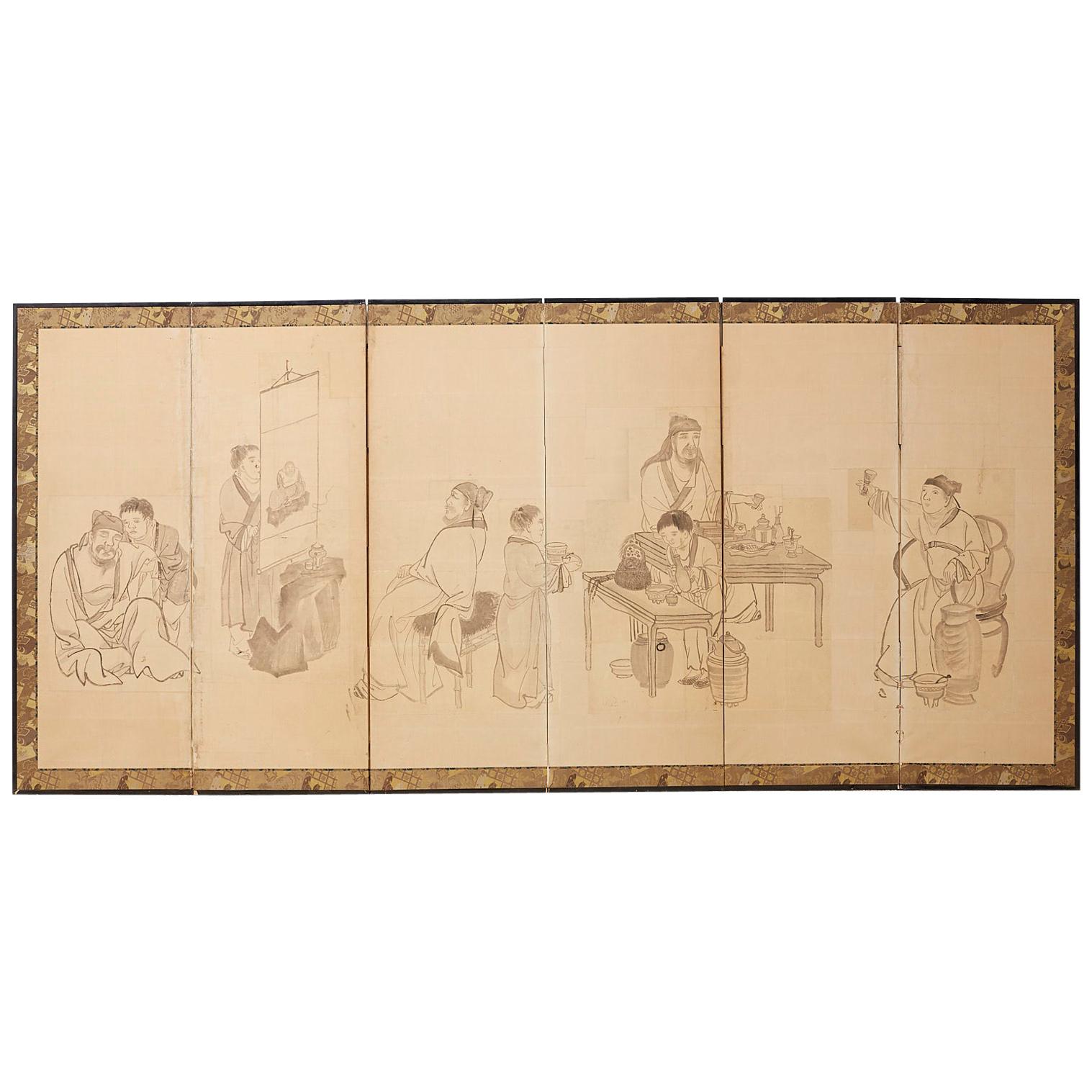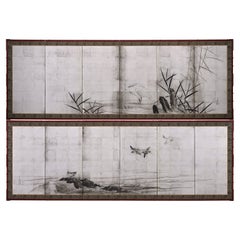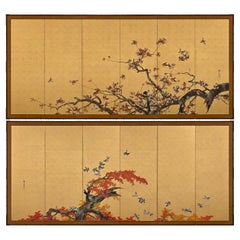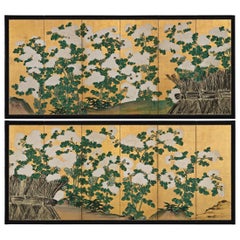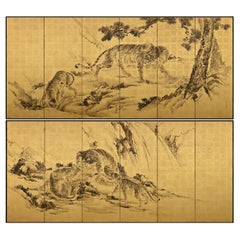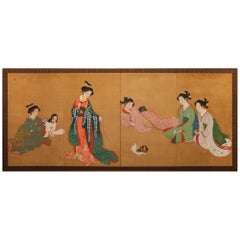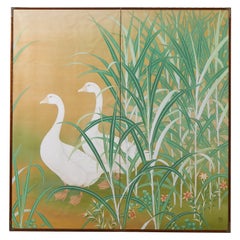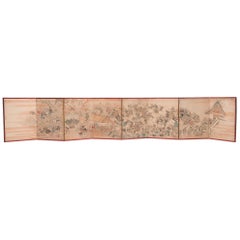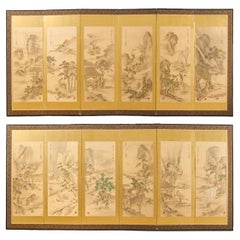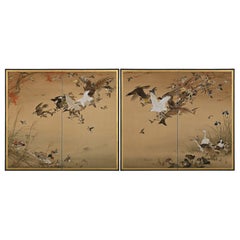
Meiji Period Japanese Screen Pair, One Hundred Birds by Hasegawa Gyokujun
View Similar Items
Want more images or videos?
Request additional images or videos from the seller
1 of 13
Meiji Period Japanese Screen Pair, One Hundred Birds by Hasegawa Gyokujun
Price:$52,700
$62,000List Price
About the Item
- Dimensions:Height: 67 in (170.18 cm)Width: 75 in (190.5 cm)Depth: 0.75 in (1.91 cm)
- Sold As:Set of 2
- Style:Meiji (Of the Period)
- Materials and Techniques:
- Place of Origin:
- Period:1900-1909
- Date of Manufacture:circa 1900
- Condition:Wear consistent with age and use.
- Seller Location:Kyoto, JP
- Reference Number:1stDibs: LU2472331333822
About the Seller
5.0
Recognized Seller
These prestigious sellers are industry leaders and represent the highest echelon for item quality and design.
Established in 2001
1stDibs seller since 2016
70 sales on 1stDibs
Typical response time: 6 hours
Authenticity Guarantee
In the unlikely event there’s an issue with an item’s authenticity, contact us within 1 year for a full refund. DetailsMoney-Back Guarantee
If your item is not as described, is damaged in transit, or does not arrive, contact us within 7 days for a full refund. Details24-Hour Cancellation
You have a 24-hour grace period in which to reconsider your purchase, with no questions asked.Vetted Professional Sellers
Our world-class sellers must adhere to strict standards for service and quality, maintaining the integrity of our listings.Price-Match Guarantee
If you find that a seller listed the same item for a lower price elsewhere, we’ll match it.Trusted Global Delivery
Our best-in-class carrier network provides specialized shipping options worldwide, including custom delivery.More From This Seller
View AllJapanese Silver Screen Pair, Meiji Period, Herons & Plovers, Shijo School
Located in Kyoto, JP
Heron & Plovers
Ink and silver leaf on paper
Maekawa Bunrei (1837-1917)
A pair of low six-panel Japanese screens by Maekawa Bunrei, a later master of the Kyoto based Shijo school of painting. On the right screen a solitary white heron stands motionless in a stream. On the left screen plovers play along a shoreline. The elegant forms are executed employing fluid, minimalistic ink brushstrokes. The soft brushstrokes and the sharp light of the silver leaf lend the scenes a sense of translucence. The sophisticated composition superbly exploits the long, horizontal pictorial surface of the pair of folding screens...
Category
Antique Early 1900s Japanese Meiji Paintings and Screens
Materials
Silver Leaf
Meiji Era, Circa 1900 Japanese Screen Pair, Flowers & Birds of Spring & Autumn
Located in Kyoto, JP
Flowers & Birds of Spring and Autumn
Unknown artist.
Japan. Meiji period, circa 1900.
A pair of six-fold screens. Ink, color, gofun and gold leaf on paper.
Signed: Gaga S...
Category
Antique 1890s Japanese Meiji Paintings and Screens
Materials
Gold Leaf
Mid-18th Century Japanese Screen Pair, One Hundred Flowers, Chrysanthemums
Located in Kyoto, JP
Omori Soun (b. 1704)
Chrysanthemums - One Hundred Flowers
A Pair of Six-fold Japanese Screens. Ink, color, gofun and gold leaf on paper.
Dating ...
Category
Antique Mid-18th Century Japanese Edo Paintings and Screens
Materials
Gold Leaf
Japanese Screen Pair, Tigers by Kishi Renzan, Late Edo Period
Located in Kyoto, JP
Kishi Renzan (1804-1859)
Tigers
Pair of six-panel Japanese screens.
Ink and gold-leaf on paper.
In this monochromatic pair of six-fold Japanese screens painted on gold-leaf, Kishi Renzan has created a breathtaking composition of a family of tigers. The screens are filled with a sense of drama which is conveyed by both the subject matter and the wet, expressive brushwork. The running mountain stream and the towering waterfall allude to refreshment during the summer months and we feel the tiger families familiarity and security within their environment. Renzan’s master, Kishi Ganku...
Category
Antique Mid-19th Century Asian Edo Paintings and Screens
Materials
Gold Leaf
19th Century Japanese Screen Pair. Flowers & Birds of the Four Seasons
Located in Kyoto, JP
Flowers & Birds of the Four Seasons
Pair of six-fold Japanese Screens. Ink, color, gofun and gold on paper.
Second half of the 19th Centur...
Category
Antique Late 19th Century Japanese Meiji Paintings and Screens
Materials
Wood, Paper
17th Century Japanese Screen. Ink Plum Tree & Birds by Kano Naonobu.
Located in Kyoto, JP
Kano Naonobu (1607-1650)
Plum Tree and Birds
Six-fold Japanese Screen. Ink and slight color on paper.
In this evocative ink work spread over a six-panel folding screen, we see the consummation of the elegance and refinement of the Edo Kano school. This 17th century screen is a rare surviving example of a large-scale bird and flower painting by Kano Naonobu, the younger brother of Kano Tanyu...
Category
Antique 17th Century Japanese Edo Paintings and Screens
Materials
Wood, Paper
You May Also Like
Meiji Period Japanese Four Panel Screen Bijin At Leisure
Located in Hudson, NY
Japanese four panel screen: Bijin At Leisure. Ladies in a tea house with a small dog. Seal reads "Ensan dai" (drawn by Ensan). Meiji Period (1868 - 1912) pa...
Category
Antique Late 19th Century Japanese Meiji Paintings and Screens
Materials
Silk, Wood
Japanese Meiji Two Panel Screen Geese and Reeds
Located in Rio Vista, CA
Fantastic Japanese late Meiji period two-panel byobu screen by Hashimoto Koshu. The large screen features two white geese amid brightly colored reeds. The symbolism of geese and reeds was introduced to Japan from China in the 13th century. This was a popular subject for Japanese zen artists of the period. Beautifully crafted with exceptional brush strokes and details. Made with natural pigments in dramatic vivid colors of white, pink, and mint green on a silk background of gilt. Circa 1900 with artist seal on bottom right corner. Koshu studied Western art under...
Category
20th Century Japanese Meiji Paintings and Screens
Materials
Silk, Wood, Paper
Japanese Edo Period Festival Screen, c. 1750
Located in Chicago, IL
This 18th century folding screen is a stunning example of Japanese artistry. Beautifully painted with delicate brushwork, the evocative sc...
Category
Antique Mid-18th Century Japanese Edo Paintings and Screens
Materials
Paper
Pair of Japanese Taisho Period Screens Paragons of Filial Piety
Located in Rio Vista, CA
Impressive pair of Japanese screens from the Taisho period meiji. Each six-panel screen depicts an image from the 24 paragons of filial piety ...
Category
20th Century Japanese Taisho Paintings and Screens
Materials
Brass, Gold Leaf
Japanese Meiji Riverside Scroll Painting, c. 1900
Located in Chicago, IL
Although western painting was initially embraced during Japan’s Meiji period (1868-1912), artists brought on a revival of traditional painting styles as they sought to create a modern Japanese style with roots in the past. This exquisite hanging scroll demonstrates the preference for soft layering of gray tones with judicious use of color. The landscape is rendered in soft ink washes that subtly distinguish between water, mountain, and sky. The scroll painting...
Category
Early 20th Century Japanese Meiji Paintings and Screens
Materials
Paper
Japanese Taisho Two Panel Screen Heian Period Flute Player
Located in Rio Vista, CA
Extraordinary Japanese Taisho period two panel byobu screen depicting Fujiwara Yasumasa playing the flute in the Ichihara Moor. Fujiwara Yasumasa (958 to 1036) was a famous Heian period...
Category
20th Century Japanese Taisho Paintings and Screens
Materials
Silk, Wood, Paper
Recently Viewed
View AllMore Ways To Browse
Chinese Phoenix Silk
Birds Of Paradise China
Hand Painted Birds Of Paradise
Peacock Japanese Screen
Chinese Folding Silk Screen Art
Pair Of Chinese Parrots
Japanese Parrot
Yamamoto Shunkyo
Vintage Asian Painting
Japanese Crane
Japanese Silk Panel
Asian Cranes
Japanese Meiji Panel
Edo Period Gold
Chinese Painting On Silk
Asian Antique Landscape Paintings
Japanese Lacquer Panels
Antique Japanese Seals
